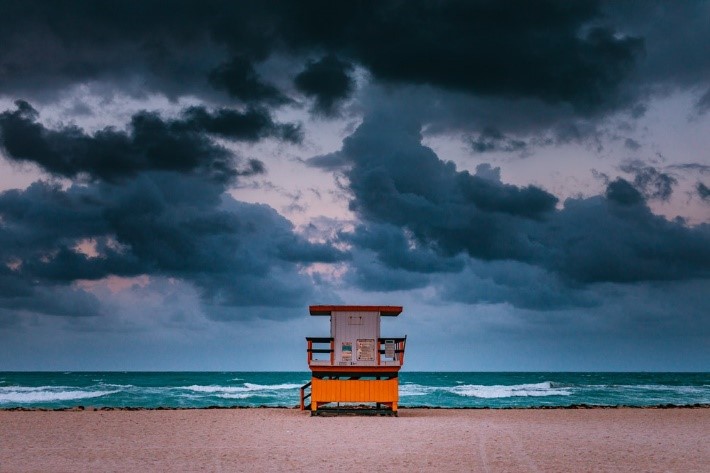In 2017, powerful Hurricane Irma brushed South Florida and brought storm surge which inundated some of Miami’s most expensive real estate. The storm flooded Brickell’s streets and parking garages with saltwater as high as 5 feet in certain areas.
Storm surge isn’t the only naturally occurring threat to impact the community in recent years. In 2017, Miami Beach struggled with flooding from a particularly strong King Tide — an exceptionally high tide created by gravitational forces attributed to the sun and moon.
Mother nature won’t relent any time soon. Most scientists agree that in coming years the existing threat of flooding will become amplified, placing already vulnerable coastal communities at higher risk. Miami is particularly susceptible to saltwater flooding due to its low elevation and proximity to the sea. Powerful hurricanes and King Tides will continue to affect the region and it’s apparent that fortifiable design will continue to take center stage in the battle to protect property.
Factualize & Conceptualize
There appears to be little turning back and society must face the reality of what lies ahead. Gaining a thorough understanding of the problem is the first step to finding a solution. Architects, engineers, developers, and local government entities have already opened a dialogue intended to help fortify the city in the coming years. Teams assembled to tackle the region’s issue have reviewed in-depth scientific studies and projections to become armed with the facts needed to develop successful strategies.
The application of fortifying design is increasingly common with new projects in South Florida. Older built projects are also seeing an increase in fortification remodeling. Current strategies include: 1) designing elevated structures less susceptible to flooding in lower levels, 2) preserving and integrating wetlands with developments to reduce storm surge, 3) creating more efficient wall barriers, and 4) establishing effective pump systems to remove flood water. Other ideas are more out-of-the-box and push the limits of human imagination and capability, such as the concept of modern, self-governed floating cities or independent floating homes.
Here in Miami, the 75-foot-long floating Arkup home can be seen moored in Biscayne Bay. Designed to combat elevated water levels from advancing hurricanes and King Tides, the $5.5 million home is attached to four hydraulic pilings which act as stabilizers. The pilings can be positioned to elevate the vessel like a house on stilts. The structure also features sustainable design elements including solar panels and a rainwater collection system.
Derouin Luguet, one of the project engineers, stated: “Coastal areas are the most desirable but also the most at risk. Miami is implementing resiliency measures. We hope Arkup can be a small part of the solution.”
Continual Adaption
Our ever-changing world requires architects to create inspiring and resilient structures, which both satisfy the needs of their clients while standing the test of mother nature and demonstrating adaptability. These designs often push the boundaries of conventionalism. Yet, since the dawn of humankind, mother nature has forced us to adapt to our natural environment and construct dwellings which kept us sheltered and safe – just as we must do in the modern age.



